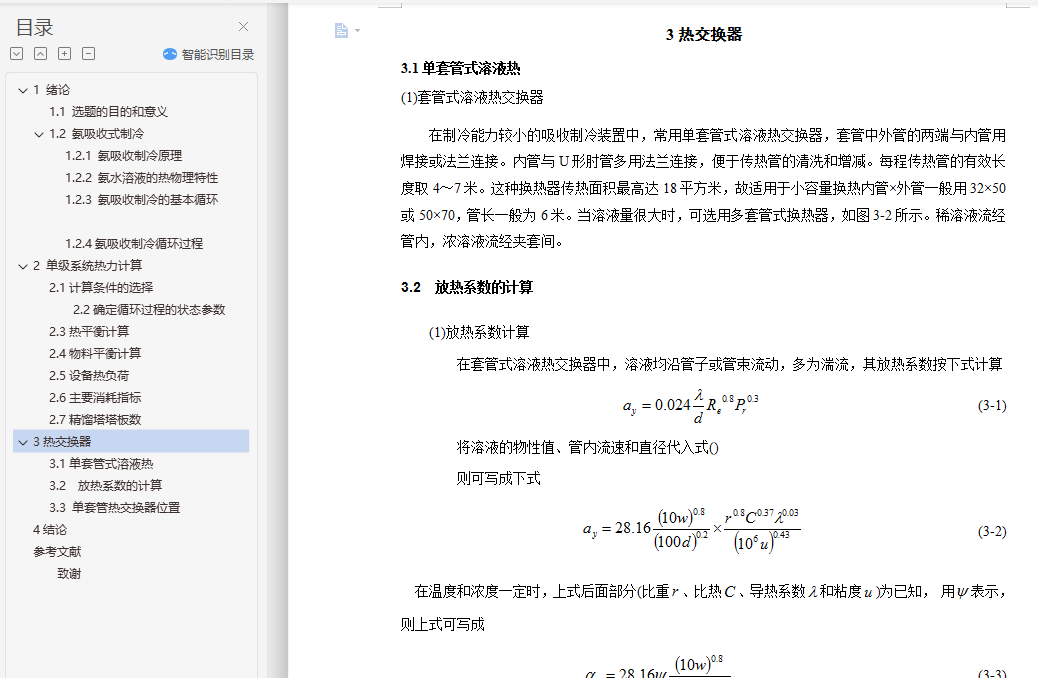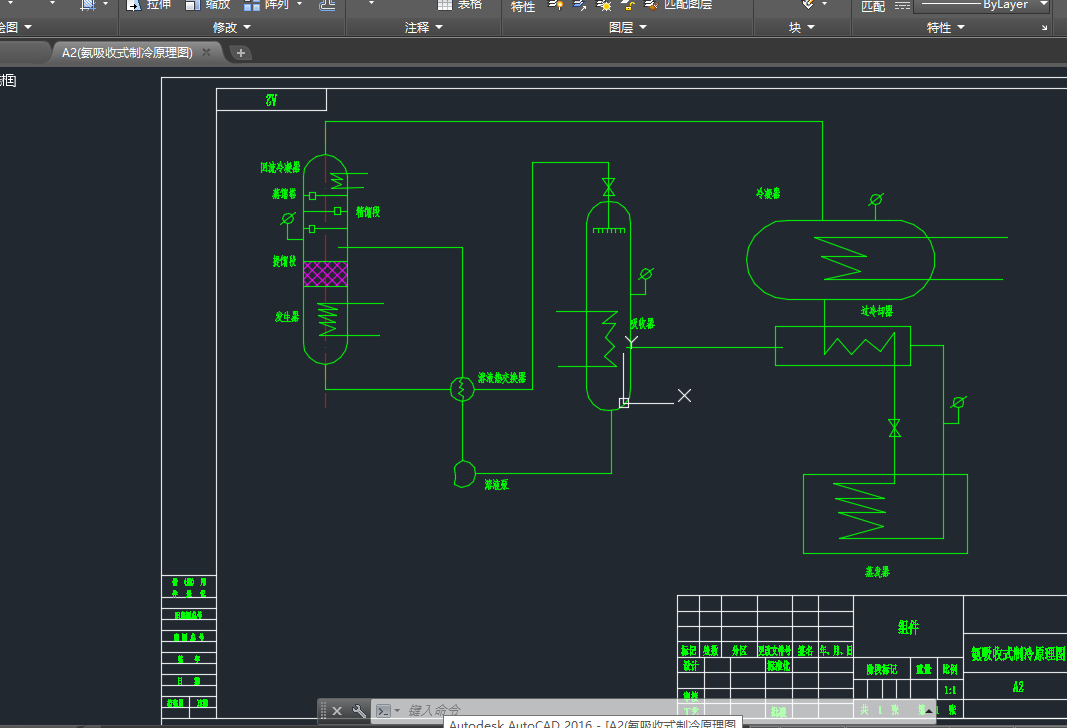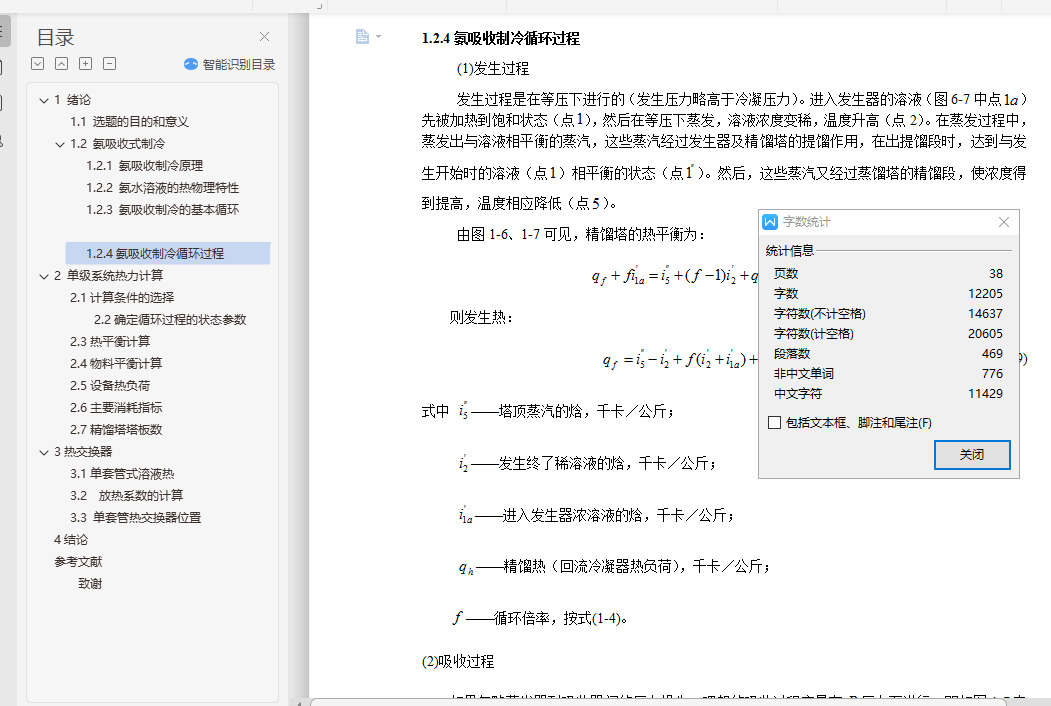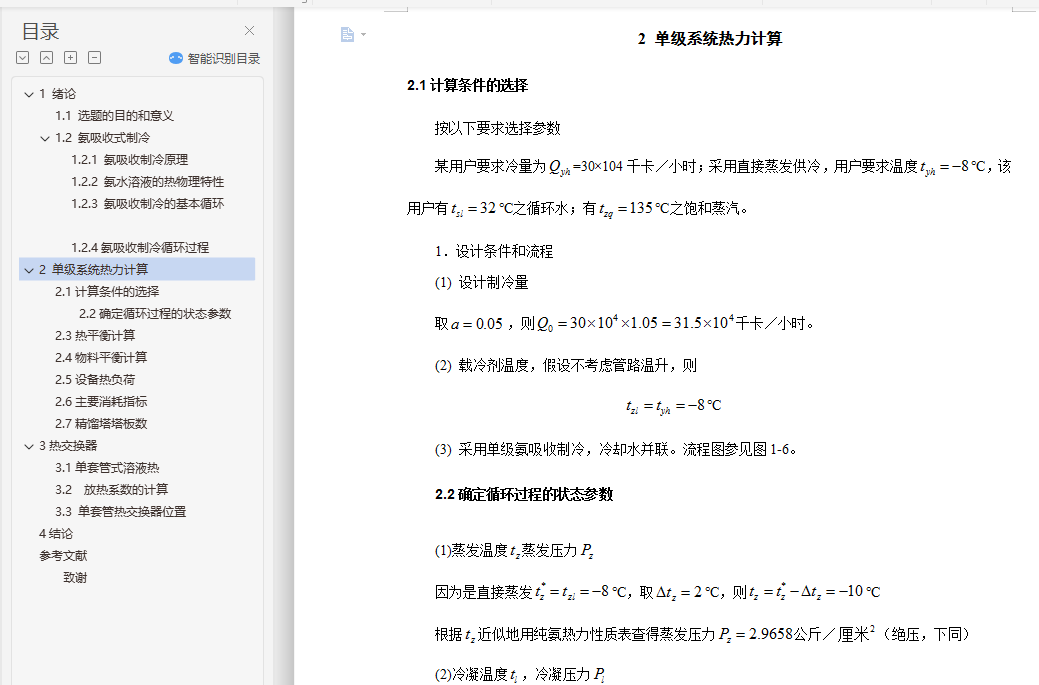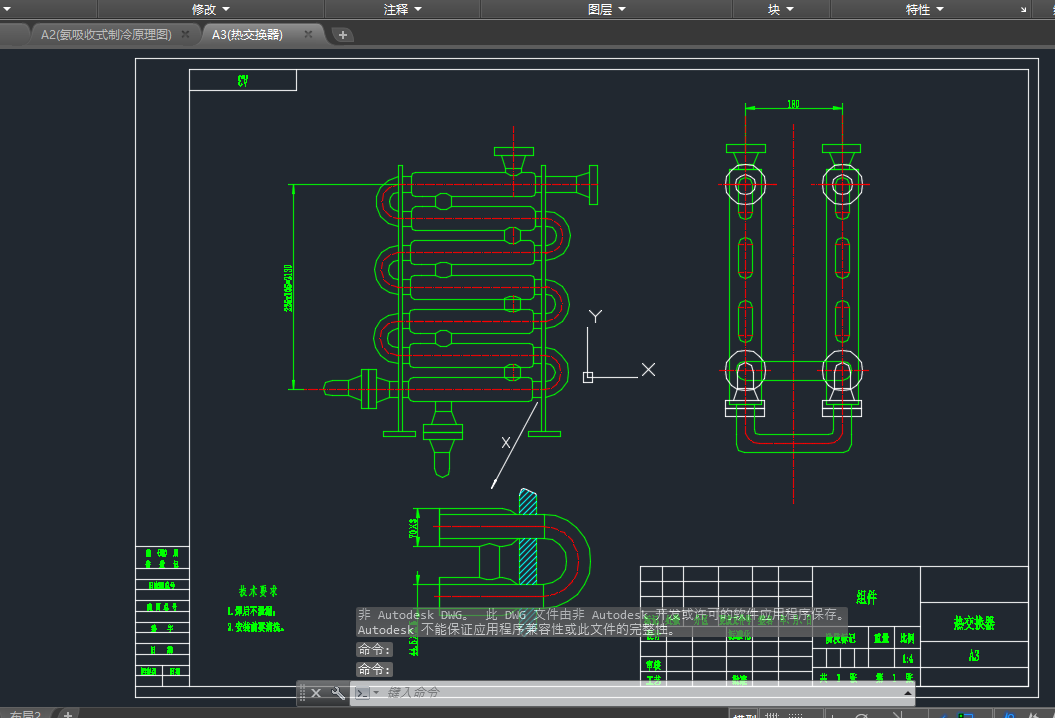氨吸收式制冷机组的设计计算
[摘要] 氨吸收式制冷机是以二元溶液的热力特性为基础的,其工质为氨水溶液,其中氨是制冷剂,水是吸收剂。若要获得0℃以下的低温,就唯有采用氨水溶液吸收式制冷机。这种制冷机所需的热源温度不高,低于200℃,而产生的蒸发温度范围能自+10℃到-60℃,单机制冷量可以小到1MW以下,也可以大到超过22MW。它可以利用低品味热源,使能源得到合理的利用。
根据对氨吸收式制冷量的工作流程,对热交换器的工作流程有了了解,进而可以对其优缺点有深刻的认识,从而自己进行改进。由于所选制冷量小,所以选用套管式热交换器。套管式热交换器是用两种尺寸不同的标准管连接而成同心圆套管,外面的叫壳程,内部的叫管程。两种不同介质可在壳程和管程内逆向流动(或同向)以达到换热的效果。在制冷能力较小的吸收制冷装置中,常用单套管式溶液热交换器。结构简单,传热面积增减自如,传热效能高结构简单,工作适应范围大,传热面积增减方便,两侧流体均可提高流速,传热面两侧有较高的传热系数。根据用户要求冷量 千卡/小时,计算氨吸收式制冷机组循环过程中热量的平衡,并对氨吸收式制冷机原理流程图及热交换管进行CAD绘制,并且对于单套管式热交换器在氨吸收式制冷机中的位置用三维UG图得以显示。
千卡/小时,计算氨吸收式制冷机组循环过程中热量的平衡,并对氨吸收式制冷机原理流程图及热交换管进行CAD绘制,并且对于单套管式热交换器在氨吸收式制冷机中的位置用三维UG图得以显示。
[关键词] 氨;吸收式制冷机;传热计算;单套管式热交换器
Aqueous ammonia solution cooling absorption refrigeration driven by fishing boat diesel exhaust heat
Lianglihua
(Grade08,Class2,Major Heat Energy and Dynamic Engineering,School of Mechanical Engineering Shannxi University of Technology,Hanzhong 723003,Shaanxi)
instructor:Wangxufei
Abstract: A solution cooling absorption (SCA) approach is proposed to modify the aqueous ammonia absorption refrigeration cycle using the strong solution from the absorber to cool the forepart of the absorption in the cycle for reclaiming some portion of absorption heat As a consequence of raised temperature at the inlet the strong solution partially boils at the outlet of the solution heat exchanger, and diminishes the thermal heat consumption of the heat source. The calculation results show that the coefficient of performance (COP) of this modified cycle is about28·3% higher than that of the traditional cycle under typical conditions; while the required heat transfer area of the total heat exchangers of the cycle is somewhat less than that of the traditional one.The capacity of refrigeration with the new absorption cycle is more than doubled in contrast to the adsorption scheme with an identical configuration. It is sufficient to supply a fishing boat the chilling capacity for preservation of fishing products with the modified cycle chiller driven by its diesel engine exhaust.
Key words: aqueous ammonia absorption refrigeration;solution cooling absorption;waste heat recovery; heat and mass transfer; coefficient of performance.
目录
中文摘要
Abstract
1 绪论 1
1.1 选题的目的和意义 1
1.2 氨吸收式制冷 2
1.2.1 氨吸收制冷原理 2
1.2.2 氨水溶液的热物理特性 2
1.2.3 氨吸收制冷的基本循环 5
1.2.4氨吸收制冷循环过程 8
2 单级系统热力计算 22
2.1计算条件的选择 22
2.2确定循环过程的状态参数 22
2.3热平衡计算 24
2.4物料平衡计算 26
2.5设备热负荷 27
2.6主要消耗指标 27
2.7精馏塔塔板数 28
3热交换器 29
3.1单套管式溶液热 29
3.2 放热系数的计算 29
3.3 单套管热交换器位置 32
4结论 33
参考文献 33
致谢 34
